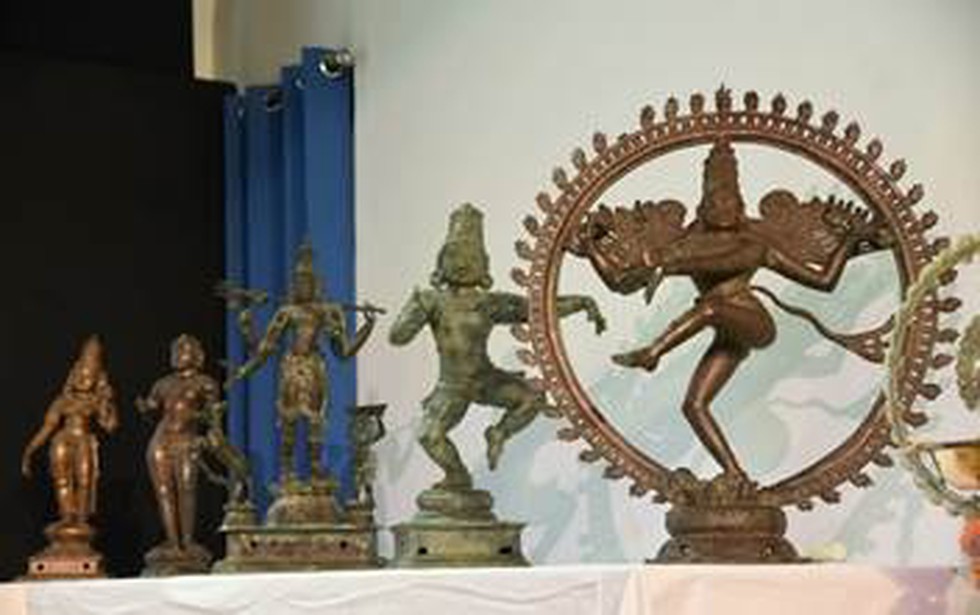Some of the returned antiquities:
- Dvarapala: This stone sculpture belongs to the Vijayanagar dynasty dating to the 15th-16th century. He is holding a gada in one hand and has another leg raised up to the level of his knee.
- Nataraja: This image of Nataraja, a depiction of Shiva, in his divine cosmic dance form, is in tribhanga posture, standing on the lotus pedestal. Possibly, ananda tandava or the Dance of Bliss is portrayed here.
- Kankalamurti: Kankalamurti is depicted as a fearsome aspect of Lord Shiva and Bhairava. The sculpture is four-armed, holding ayudhas such as damaru and trishula in the upper hands and a bowl and a trefoil shaped object, as a treat for the playful fawn, in the lower right hand.
- Nandikeshvara: This bronze image of Nandikeshvara, dateable to the 13th century, is shown standing in tribhanga posture with folded arms, holding an axe and a fawn in the upper arms, with his forearms in namaskara mudra.
- Standing child Sambandar: Sambandar, the popular 7th-century child saint, is one of the Muvar, the three principal saints of South India. THE legend goes that after receiving a bowl of milk from Goddess Uma, the infant Sambandar devoted his life to composing hymns in praise of Lord Shiva.
